Almer Page (1912-2007)
The Life and Times of a Tewkesburian in the 20th Century

Almeric Henry Page was born on 4 January 1912, at the ‘Hermitage’,[2] Gloucester Road, Tewkesbury, the second son of Harold Page (1884-1947) and Florence Page (née Peters, 1887-1968). The family consisted not only of his parents, but also Harold’s mother, his elder brother, Cyril (1907-1981) and his sister, Doris Nellie (Nell) (1910-2006). His younger brother, Ted, was born in 1922 but was tragically killed on Active Service overseas in 1944.[3] There were also other close relations resident there.
The ‘Hermitage’ was originally a Turnpike (toll) house in the days of stagecoach travel. The property stood opposite the Workhouse.[4] It was a tied house to Tewkesbury Park, then a private country house. Later it became the Lodge House. Almer’s grandmother was the tenant and laundress to Tewkesbury Park. The family also took in washing from the Workhouse, as well as taking in, for safe-keeping, valuables and sentimental items, which would otherwise have been confiscated when the unfortunates entered the Workhouse.
Almer was a sickly child and not expected to live; so his parents delayed registering the birth of their son. The extremely unusual Christian name ‘Almeric’ was conferred upon him as a result of his mother’s employment with a local doctor, Doctor Devereux, and his wife. They lived at ‘North House’ (now demolished) which stood in its own grounds between Bredon Road and Oldbury Road. Their son was named ‘Almeric’, so Almer’s mother adopted it for him. The name itself dates back to the Middle Ages (an Earl of Gloucester was called ‘Almeric’) and probably even earlier to Anglo-Saxon times.
to Expand
However, he did survive, and one of his earliest memories was being carried by his mother to see a Frenchman, M. Gustav Hamel, who landed his flimsy monoplane in the field behind the ‘Hermitage’ on Windmill Hill, where the Tewkesbury Borough Council offices now stand, in October, 1913.
During the Great War, 1914-1918, Almer’s father served with the 2nd/5th Battalion Gloucestershire Regiment in France, and was badly wounded. He was honourably discharged in 1916, and later resumed his employment with S. Healing and Sons, flour millers, in Tewkesbury, where he had previously worked for some years.
In 1917, Almer’s grandmother died and so the family had to leave the tied accommodation, moving into a rented house at 74 High Street, Tewkesbury. Almer had begun his schooling at the Abbey Boys’ School but had won a scholarship to Tewkesbury Grammar School in Church Street.[5]
In 1921, the family moved again, voluntarily, into another town house of their own, at 20 Chance Street, Tewkesbury, next door but one to St. Joseph’s Catholic Church of today. Almer was christened into the Church of England and worshipped regularly at Tewkesbury Abbey, with the rest of his family.
to Expand
In May, 1927, at the age of 15, Almer left school and started work, with his father, at S. Healing and Sons. In fact, all the male members of the family worked at Healing’s Mill for various periods of time, before, during, and after the Second World War. Almer began learning the flour miller’s trade in detail. He also worked on the Firm’s steam-powered lorries in the late 1920s and early 1930s, before these were replaced by petrol-driven vehicles.
In 1931, Almer, his father, sister and bride-to-be took part in the Tewkesbury Pageant. The Pageant was held in order to raise money for a new hospital in Tewkesbury. There was no National Health Service to fund the provision of such facilities then. The new hospital was opened on 13 October, 1934, by Her Royal Highness Princess Alice, Countess of Athlone, the last surviving grand-daughter of Queen Victoria and son of Prince Leopold.
In 1932, as he had an interest in the welfare, guidance and training of young people, Almer joined the 3rd Tewkesbury Scouts, becoming Scout Leader. He also became a campanologist at Tewkesbury Abbey, Twyning Church and St. Nicholas Church, Ashchurch, amongst other places of worship. Almer last went bell-ringing on V.E. Day (8 May 1945).
In the 1920s and 1930s, Almer, along with others, cultivated the gardens and allotments where St. Joseph’s now stands. The building in its original form was previously the local Telephone Relay Station, constructed in 1938.
In the early 1930s, Almer was introduced to, and began seeing more of, his young relative, Mary Ward, who was born and lived in Warwickshire. Mary was of Irish descent on her mother’s side, but was sadly orphaned at an early age. Her mother died in 1919, when she was three years old, and her father in 1922. She was put into the care of one of her uncles. Another of Mary’s uncles had married one of Almer’s aunts, hence Mary and Almer’s family relationship before they were married.
Almer recalled the occasion in the 1930s when Sir Oswald Mosley, of the British Union of Fascists (‘Black Shirts’), and his supporters visited Tewkesbury. They and their views on Fascism were very unpopular with the townspeople. The gathering ended with Sir Oswald and his followers being chased down Quay Street by the angry crowd, whereupon they jumped into the Mill Avon to escape their pursuers!
In 1938, Almer joined the local Auxiliary Fire Service in Tewkesbury,[6] on a retained basis, in order principally to gain more experience in fire prevention and fire-fighting. Almer was already heavily involved in such matters at the flour mill, where he looked after the water sprinkler system, and repair and maintenance of the water supply.
Upon the outbreak of the Second World War, on 3 September 1939, Almer continued his employment at the flour mill, as he was in a ‘reserved occupation’ (food production) and, as such, was exempt from military service. He remained with the fire service, going on ‘shouts’[7] not only in the Tewkesbury area, but also at night to cities and towns in the South and West of England and South Wales during the Blitz; for example, Portsmouth, Plymouth, Bristol, Avonmouth and Cardiff to reinforce the fire brigades from those towns and cities. The brigades were further supplemented by fire-fighters from rural areas and small towns, not under the threat of bombardment from the air. Almer, like his colleagues, was at great personal danger from air-raids continuing whilst they were trying to put out fires and rescue people trapped in damaged and blazing buildings. On several occasions, orders were given to pull the ‘pumps’[8] out, because of imminent danger of burning buildings collapsing on them. Sometimes it was so cold that the water froze in the firemen’s hoses, and the men could only watch helplessly as bomb-damaged buildings burned. The next day, after travelling long distances in very uncomfortable conditions, in darkness, fighting fires and rescuing people, as already stated, Almer returned to work at Healing’s Mill. There were, of course, neither motorways nor dual-carriageway roads at that time. There were no road signs, no street lighting switched on, because of the blackout, and the fire engines had their head-lights louvred in order to emit as little light as possible. The firemen had, for the most part, to sit on a bench on the side of the fire engines, holding on to the ladders secured behind them. Almer became an A.R.P. Warden and, when not working with the fire service, or inside the Mill, he was fire-watching from the top of the mill for incendiaries being dropped, or other enemy activity.

Register, 13 September 1941
Despite all this hectic and dangerous war activity, on 6 September 1941, Almer married his by then fiancée, Mary Ward, on her 25th birthday. The happy couple, after spending their honeymoon in Rugby, Warwickshire, returned to live with Almer’s parents at 20 Chance Street. Almer continued working at the Flour Mill and with the Fire Service. Mary was engaged on war work, making aircraft dials and instruments at S. Smith and Sons, at Bishops Cleeve.
Almer converted to the Catholic faith upon his marriage, and remained a practising and devout Catholic for the rest of his life. He and Mary would walk from Chance Street to St. Joseph’s on the Mythe Hill for Mass, Benediction and Stations of the Cross, and then back home again, as many times as they could, in all winds and weathers.
Mary was also a devout Catholic, having been born into the Faith. She was very involved with the Catholic Women’s League, holding several honorary positions within the organisation in Tewkesbury, until it folded through lack of members in the late 1970s. Mary also helped out very regularly with church fund-raising activities, including sales of work, bazaars and jumble sales, for many years.
to Expand
During the Second World War, in early 1941, Almer and Mary gave a home to Tony Poyner, the young son of Almer’s cousin, George, and his wife, Cathy (Sis), who lived in Coventry. Tony’s sister, Josie, was also evacuated to Tewkesbury, and lived with Almer’s sister, Nell, and her husband, Len. George was employed by the Standard Motor Works in Canley, the firm then being engaged in war work. George was also a fireman and, when the alarm was raised, would leave his work or home to report for duty. He and Cathy decided to evacuate Tony and Josie, as with all the bombing, they did not know whether their house would be hit. Coventry and its factories was a prime target for German bombers, for example, on 14 November 1940, Coventry Cathedral was destroyed, and one thousand civilians were killed as a result of an air raid.
Almer experienced two particularly gruesome episodes during the War, one with the fire service, and one during work at the flour mill. The first was on his 30th birthday, 4 January 1942, during an air raid in Cardiff. Almer, with his colleagues, dug through the ruins of a house where it was reported that a little girl was trapped, but still alive. After digging for quite a while through the debris, the little girl was located but, as her blood-soaked body was carefully lifted out, her head fell off at Almer’s feet. (Almer was never quite sure how many people he himself rescued, injured and alive, from the many bombings and conflagrations he attended, but it must have been quite a sizeable number over the years).
The other incident happened in November, 1942. Members of the 1st Gloucestershire Battalion Home Guard, led by Sergeant A. Hanlon, were practising loading and unloading an anti-tank gun in the Manager’s office at Healing’s Mill, the room being the only one of sufficient size available for the exercise to take place in. The practice bomb, which was thought by all concerned to be a dummy, did in fact contain a ‘live’ charge. It seems that Sgt. Hanlon was somehow standing in front of, or to an angle in front of, the gun, when the shell exploded, hitting the unfortunate Sgt. Hanlon, fatally injuring him, and taking out four feet of brickwork behind him. Almer had to clean off from the damaged wall the next morning the splattered remains of Sgt. Hanlon (the body itself had already been removed) and repair the damage caused to the room concerned. Almer, like many others who served on the Home Front, was awarded the Defence Medal 1939-1945 for his work with the Auxiliary Fire Service/National Fire Service. [9]
Almer’s father was too old at 55 in 1939 for military service, as well as medically unfit from injuries suffered in the First World War. He joined the local Home Guard, becoming a Quartermaster-Sergeant. Almer’s elder brother, Cyril, joined the Royal Navy and younger brother, Ted, joined the Royal Air Force, as a Volunteer Reservist. Sister Nell, meanwhile, became a nurse at Tewkesbury Hospital; she was in the operating theatre on D-Day (6 June 1944), for example.
to Expand
In October 1945, just after the end of the war, Almer left the by then National Fire Service to concentrate on his civilian commitments. He also joined the local Sea Cadet Corps as an Adult Instructor, eventually rising to the non-commissioned rank of Chief Petty Officer. His reason for joining was the same as for the Scouts (which had disbanded on the outbreak of World War II); his specialist subject was rope-work and knots. Almer was with a party of cadets in London, in the Royal Albert Hall, on the night Prince Charles was born (14 November 1948).
Almer’s association with the Tewkesbury Unit of the Sea Cadet Corps continued until 1977. Mary ran the canteen, with the help of certain other ladies, at Unit Headquarters, firstly in Smiths Lane (now Somerfield’s car park) and then in Red Lane (now town houses), for many years.
In 1947, Almer’s father, Harold, died.[10] Almer and Mary had previously set up home at 21 Chance Street, next to his parents’ house. After the death of Almer’s father, his mother, Florence, took in a young boy just 14 years old, named Dennis Fry, who had lost his parents at a very early age, as her foster son. Almer and Mary then moved back to live with Almer’s mother next door on a permanent basis, with her approval. Florence had lost not only her husband of 41 years, but also her youngest son, Ted, in 1944, three years before, and so she was glad of the company. In 1948 Almer and Mary’s son, David, arrived. (Dennis and David both joined the Sea Cadet Corps, each eventually becoming an officer.)
Almer continued to work for the flour mill, receiving his gold watch for 25 years service in 1952. Almer was also a ‘trouble-shooter’ at the mill because of his very extensive knowledge and training in mill maintenance. He would often be called out at night with a message from the employee who awakened him to say that the mill had broken down.
Whilst Almer was working at the Flour Mill, he and his colleagues annually used to construct, decorate, and fit out the Healings Stand at the Three Counties Show, in June. Originally, the Show was held in each of the three counties (Gloucestershire, Worcestershire, and Herefordshire), but in later years, it was always held on the permanent showground in the shadow of the Malvern Hills. On one occasion, Almer was very honoured to be presented to a Ghurkha V.C..[11]
to Expand
Like his father before him, for many years Almer was also an active member of the Conservative and Unionist Party. He sat on the committee that decided to select the Honourable Nicholas Ridley as the prospective Member of Parliament for the then Cirencester and Tewkesbury constituency, in 1959. Indeed, Almer and Mary were delighted to be introduced to the then Prime Minister, Edward Heath, when he visited Tewkesbury in 1971.
In 1968, Almer’s mother died. Almer, Mary and David continued to live at 20 Chance Street, which Almer’s mother had willed to him. In 1978, however, Almer was diagnosed with ‘diabetes mellitus’. Fortunately this chronic condition was able to be successfully controlled, and Almer was able to continue living a normal life. He did though fervently support the work of the British Diabetic Association.[12]
Almer retired from the flour mill in 1979, after 52 years’ loyal and unbroken service, and enjoyed 27 years in happy retirement. Almer’s leaving present was a suite of high quality furniture; a drop-leaf dining table, four Windsor chairs, and a Dutch dresser.
Almer commented when he retired that he had spent 50-plus years maintaining, repairing and rebuilding parts of the flour mill (obviously with the help of his colleagues) and that the old interior of the mill was being ripped out to be replaced by very modern machinery, incorporating push-button technology. It was certainly time for him to retire as he had neither experience, nor training, with the futuristic mill machinery, although he could have stayed on if he had so wished, and could have been trained in the new ways.
In January, 1977, Almer, Mary and David, went on a pilgrimage to Greece, to visit the grave of Almer’s younger brother, Ted (Edward William), who was killed at Kafissia in that country and buried in the British Military Cemetery at Phaleron, near Athens. It was a very emotional occasion for the family, and especially for Almer, who last saw his brother alive in 1941, 36 years previously. Almer’s mother, Florence, and sister Nell, had already been to see Ted’s grave in 1961, when the Cemetery was opened by the King of Greece. The trip was paid for by the Royal British Legion, Tewkesbury Branch.
On 10 May 1979, just after the General Election of that year which brought Margaret Thatcher to power, Almer was involved in a distressing incident. Mrs. Agnes Kirk of 10 Chance Street, Tewkesbury, came across the road to ask Almer to come and have a look at her husband, Walter, who had stopped breathing. When Almer reached the address he found that Walter had committed suicide by placing a plastic bag over his head. Almer immediately contacted the emergency services and meanwhile tried to comfort Agnes. The episode was particularly poignant for Almer, since Walter was a long-time workmate of his at the flour mill, starting there in 1920.
In 1981, Almer, Mary and David moved to a new bungalow at Northway. Their existing house needed modernising and lacked facilities such as off-road parking. More importantly, Almer needed a new hip and would not have been able to climb the fairly steep stairs after the operation.
In 1993, Almer himself suffered a serious heart attack. Luckily, he survived with the aid of very swift resuscitation at home by Doctor Gray and the Practice Nurse, prior to being taken to Cheltenham General Hospital. In 1995, Mary died suddenly aged 78, after 54 years of marriage. Almer and David continued to live at Sinderberry Drive, with David, who had retired from work on health grounds in 1996, taking on more of his caring role for Almer.
Almer was able to attend local Day Centres for the elderly after Mary died, at Virginia Close, Northway and Station Road, Tewkesbury. He made many new friends and enjoyed the company, the activities, and the lovely meals at both centres. At the Station Approach Road Day Centre he was able to meet up with his sister, Nell, and a former workmate from the flour mill, Alec Day. The staff members, at both centres, were very kind and caring towards him.
Almer was particularly fond of dogs. He and his family had pet dogs for many years, well before the Second World War and afterwards. However, when in 1971, ‘Prince’, a cocker spaniel had to be put down, Almer said then that he and, of course, Mary and David, would never have another dog. And so it proved thus.
In 1999, Almer went to live at The Grange Nursing and Residential Home, after a long period of hospitalisation. He was never able to return home again to live because of his poor health, age and immobility. David was fortunate enough to be able to visit Almer every day, except when he himself was in hospital, to provide companionship and to do personal tasks for his father in conjunction with the nursing and caring staff, of course.
Almer loved Tewkesbury, its buildings, and its inhabitants. He was a mine of information about the town and its residents from the 1920s to more recent times. He was very sorry to recall the destruction of some of Tewkesbury’s fine (and not-so-well-cared-for), old buildings and their replacement with bland, modern and characterless structures. Almer had a seemingly limitless fund of stories and anecdotes about the town and its people, particularly from the inter-war period, the Second World War and the 1940s, 1950s and 1960s.
Almer was a member of the Tewkesbury Historical Society, although because of his great age, immobility and health problems, was not able to take an active part in the Society’s activities. He did, however, enjoy reading very keenly and fully the Society’s publications which came out over recent years. These publications were certainly of great interest to Almer, and brought back so many pleasant memories of the past. Almer was able, over recent years, with David’s help, to supply John Dixon, the President of the Tewkesbury Historical Society, with detailed information about old Tewkesbury, to help with its researches and subsequent articles. Sadly a severe stroke, in March 2006, robbed him of his previous ability to converse, to read, and sing songs and ditties that he had learned at school, and in the years thereafter. Almer was a very pleasant and delightful gentleman to know, and the town of Tewkesbury and the Parish of Ashchurch will be the poorer for his passing.
He was one of the rapidly-diminishing band of old and true Tewkesburians – the last surviving flour mill ex-employee of his generation and the last surviving fireman of the Second World War. No-one else was left from the 3rd Tewkesbury Scouts from before the last War, and Almer was the senior ex-Tewkesbury Sea Cadet Instructor alive.
Regretfully, the Flour Mill has very recently closed for good, after 141 years in Tewkesbury. It is, therefore, the end of an era for Almer’s family, the town and the Parish. He will be sadly missed by all who knew him. He is now reunited for all eternity with his beloved wife, Mary, who was herself a very lovely lady.
References
- As will be noted, the Editor over the years has received much welcome historical information from Almer and David.
- Now named the ‘Gatehouse’.
- For a biography of Edward Page, see J. Dixon, “Never has so much been owed…”, THS Publication, No. 4 (2005).
- ‘House of Industry’, later known as ‘Holm Hospital’ and now ‘Webber House, Shephard’s Mead’.
- Later a branch of the County Library and now the area office for Gloucestershire County Council Social Services Department.
- The fire station was then in Mill Street.
- Calls-out.
- Fire engines.
- For a biography of Sgt. Hanlon, see J. Dixon, “Never has so much been owed ….”, T.H.S. Publication No. 4 (2005). The author was deeply grateful for Almer’s information at the time.
- As a result of nephritis, a kidney complaint caused by his war service.
- One of the Directors of the Flour Mill, the late Mr. R.R. Hiles, was a Major in the Ghurkha Rifles during the Second World War.
- Now Diabetes U.K.

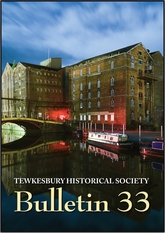
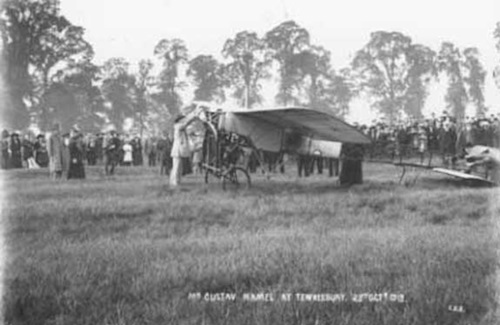
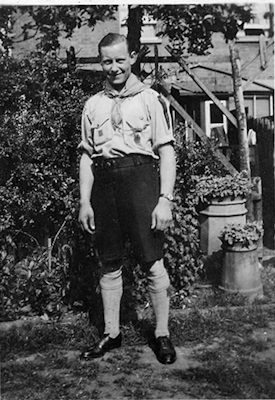
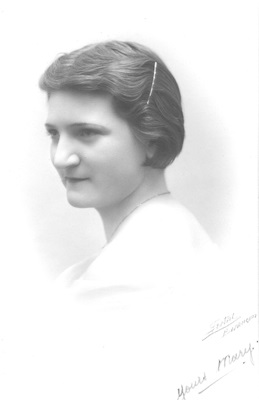
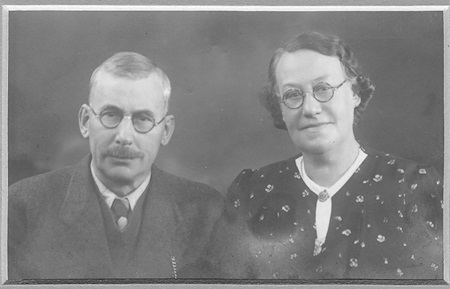
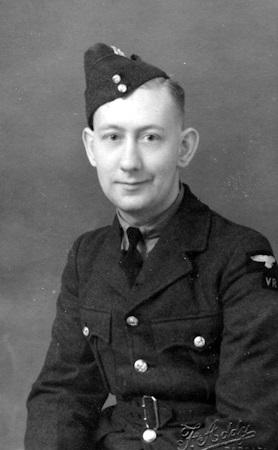
Comments